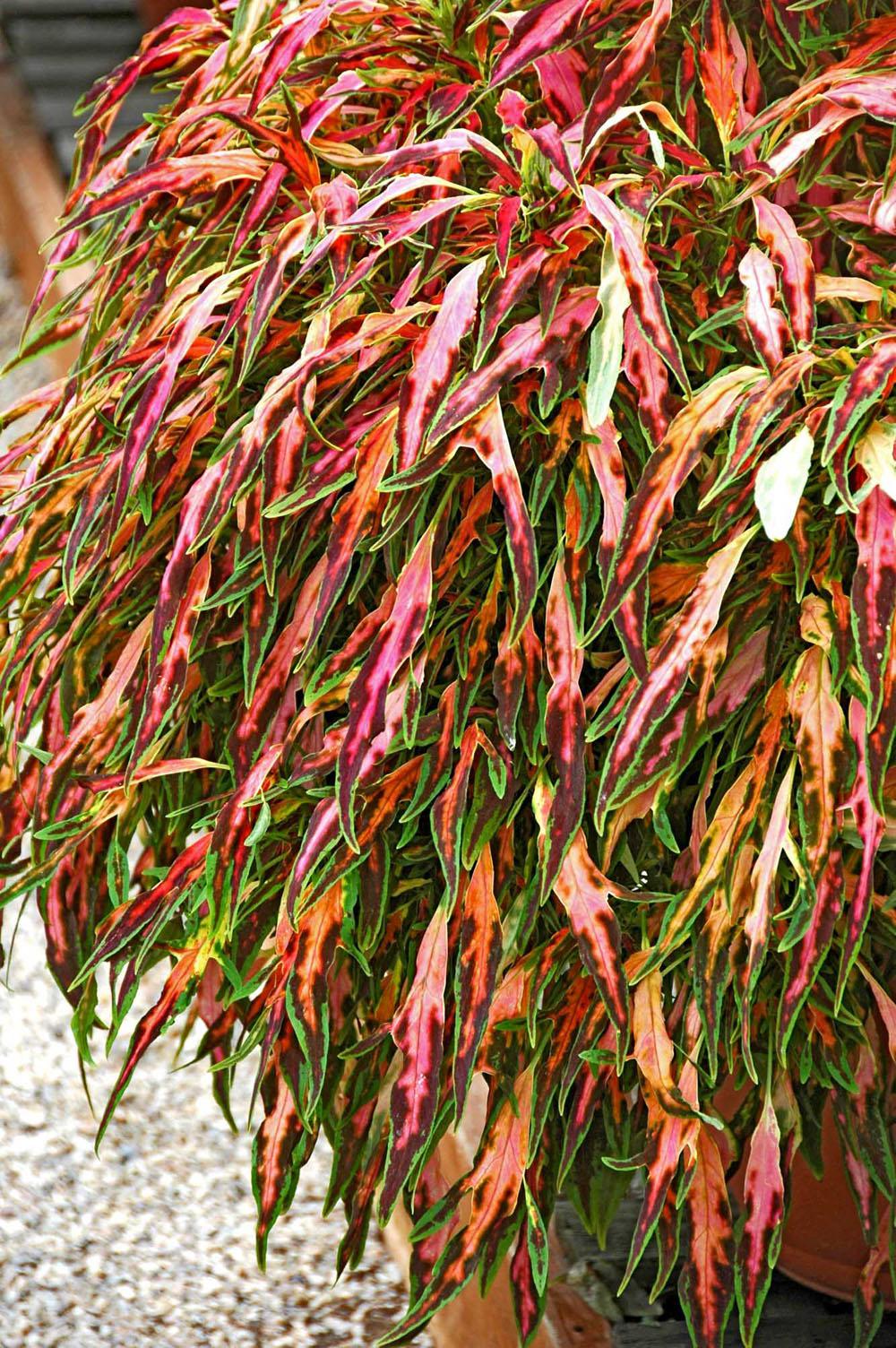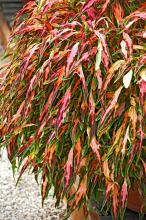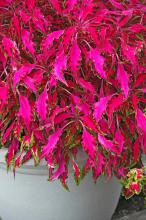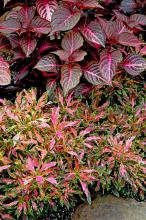Information Possibly Outdated
The information presented on this page was originally released on May 31, 2007. It may not be outdated, but please search our site for more current information. If you plan to quote or reference this information in a publication, please check with the Extension specialist or author before proceeding.
Chaos in the garden can be a great idea
By Norman Winter
MSU Horticulturist
Central Mississippi Research & Extension Center
The word chaos is about to have a new meaning in landscapes. Webster's dictionary defines “chaos” as extreme confusion or disorder. This may describe your garden. In my case, it describes my office and garage. You will think differently about chaos after seeing Pink Chaos coleus.
I have written a lot about coleuses over the years because they are foolproof plants that are a joy to grow. When you think of them, you probably recall the large-leafed selections, but some new selections have long, weeping leaves that will thrill you.
Pink Chaos is one such selection. It will reach about 18 inches tall and is iridescent pink with mint green and cream. It can take quite a bit of sun, although I prefer it in a location with morning sun and afternoon shade.
Another impressive coleus is The Flume, a slightly larger variety that reaches 24 inches tall and is sun tolerant. The leaves are a little longer than most, and some catalog descriptions call them saber-shaped. The colors are psychedelic pink and burgundy with green margins.
Both of these are so exotic and tropical-looking they scream to be in a Caribbean-style garden partnered with other foliage plants like bananas or elephant ears. You won't go wrong combining them with flowers like the mandevilla or periwinkles. In shadier locations, use these coleus with ferns or hostas like Sum and Substance.
The Oompah coleus is similarly impressive with its vibrant colors. One catalog lists it as tall and branchy with citron-green leaves that have purple centers highlighted by violet flames. You have to love that description, but it doesn't convey how much fun you will have growing it.
For those of you who have not really tried coleus and don't know much about the plant, you should know they are from tropical Africa and Asia. We once knew them scientifically as Coleus blumei. Now the tongue has to try and master the words Solenostemon scutellarioides. Obviously, it also has become a challenge to spell.
As tough as the coleus is, planting it in tight, compacted clay will yield less than satisfactory results. Your coleus will thrive and your thumb will turn an even brighter shade of green if you spend time getting your soil ready.
To prepare the soil, loosen it with organic matter like compost, humus or peat, and work the soil to a depth of 6 to 8 inches. After planting, be sure to apply a good layer of mulch to conserve moisture.
About a month after transplanting and again in midsummer, feed coleus plants with a light application of a slow-released fertilizer. We grow coleus for its fabulous foliage, so once flowers buds start to form, pinch them off.
If the large-leafed coleus varieties are all you have tried, then get bold and add a little excitement to the garden by trying Pink Chaos, The Flume or Oompah, which are all wonderfully different.










